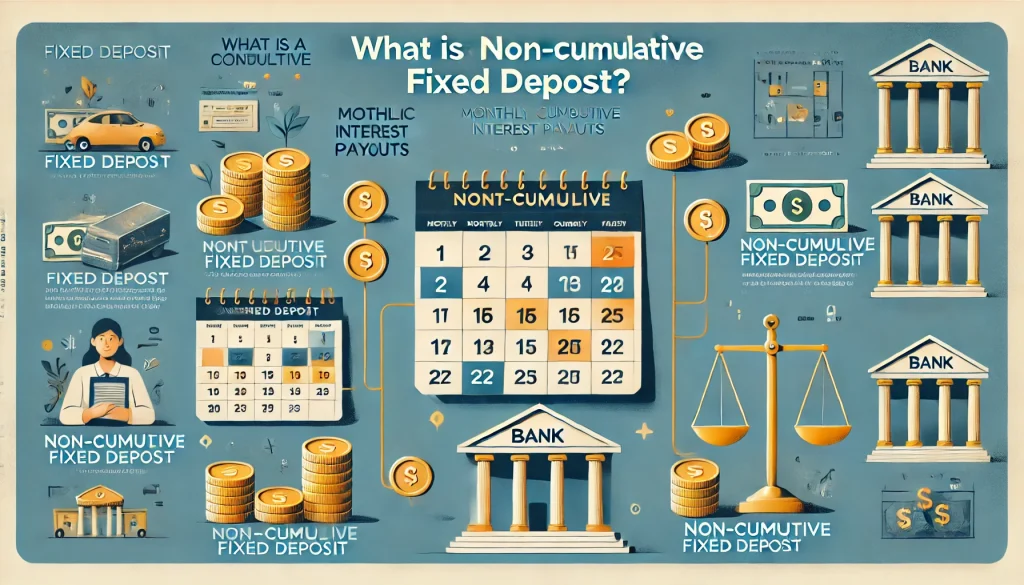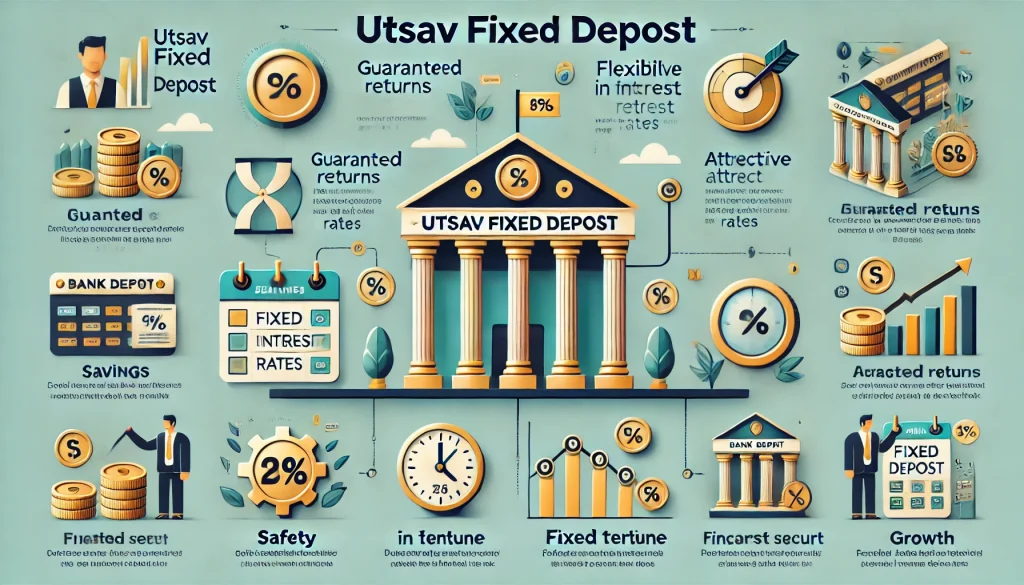
A fixed deposit is a low-risk investment plan offered by banks and financial institutions to individuals looking for consistent and stable returns. It is a financial avenue that helps investors to grow their savings by earning an interest income.
An FD scheme is widely popular as fixed-income securities, allowing investors to estimate how much interest income they will accrue. To make such an estimate, you must know how to calculate FD interest rates. Let’s see how you can do so before making any investment decision.
How to Calculate FD Interest Rates?
There are two ways of calculating the interest income earned from an FD investment. One way of doing so is through the simple interest formula, and the other is through compound interest. Let’s discuss in detail these formulas and their method of calculating interest.
1. Simple Interest
In the simple interest formula, the amount of interest is calculated by multiplying the initial amount you invest with the FD rate and tenure applicable to a scheme.
The formula of Simple Interest = (P * R * T)/100
Here, P stands for the Principal Amount or the amount of initial investment made in an FD scheme, R stands for the Rate of Interest applicable to an FD scheme, and T stands for the Tenure of an FD scheme.
We will now discuss how the fixed deposit interest is calculated with the simple interest formula with the help of an example.
Let’s say you want to invest ₹5,000 in an FD scheme with an applicable 6% interest rate for 10 years.
In this case, Principal Amount = 5,000, Rate of Interest = 6% and Tenure = 10 years. By putting these values into the simple interest formula, we can calculate the amount of interest you will receive by the end of the tenure.
Simple Interest = ₹(5,000 * 6 * 10) /100 = ₹3,000.
Now that you know the FD interest, you can further calculate the maturity value of your investment by adding interest to the principal amount.
Maturity Value = Principal Amount + Interest Income = ₹(5,000 + 3,000) = ₹8,000.
Hence, you will receive an amount of ₹8,000 by the end of 10 years if you invest in this particular FD scheme.
2. Compound Interest
In the compound interest formula, the interest income earned from an FD investment is calculated by raising the amount you invested to the number of compounding periods and further multiplying it with tenure and applicable interest rate.
The only difference between these two methods is that the compound interest method uses the power of compounding to determine maturity value. Thus, you need first to determine your investment’s maturity value to know how to calculate FD interest.
A = P (1+r/n) ^ (n * t)
In this formula,
- A = Maturity Value of an FD investment
- P = Principal Amount or the sum of money you invest in an FD scheme
- r = Applicable rate of interest offered by a bank
- n = Number of Compounding in a year
- t = Tenure or time period of an FD scheme
Let’s use an example to understand this formula in a better way.
Suppose you want to invest ₹1,00,000 in an FD scheme that offers 5% interest compounded quarterly for 10 years.
In this case, Principal Amount = ₹1,00,000, Rate of Interest = 5%, Number of Compounding Periods = 4 times and Tenure = 10 years.
If we put these values into the compound interest formula, we will get the maturity amount that you will receive from this scheme.
Maturity Amount = ₹[1,00,000 (1+0.05/4) ^ (4*10)] = ₹1,64,361.
With the maturity amount, you can calculate the amount of compound interest by subtracting the principal amount from it.
Compound Interest = Maturity Amount – Principal Amount = ₹(1,64,361 – 1,00,000) = ₹64,361.
Hence, investment in this FD scheme will generate an interest income of ₹64,361. This is how to calculate interest on a fixed deposit.
Which Bank Offers Higher Interest Rate?
Here is a list of top Indian banks offering fixed deposit schemes and the FD interest rate applicable to such schemes.
| Bank | FD Tenure with Highest Interest Rate | General Citizen Rate | Senior Citizen Rate |
|---|---|---|---|
| State Bank of India | 400 days | 3.00% to 7.10% | 3.50% to 7.60% |
| HDFC Bank | 4 Year 7 Months to 55 months | 3.00% to 7.25% | 3.50% to 7.75% |
| ICICI Bank | 15 months to 2 years | 3.00% to 7.10% | 3.50% to 7.60% |
| AXIS Bank | 15 months to 10 years | 3.00% to 7.10% | 3.50% to 7.75% |
| Punjab National Bank | 444 days | 3.50% to 7.25% | 4.00% to 8.05% |
| YES Bank | 18 months to 24 months | 3.25% to 7.75% | 3.75% to 8.25% |
| Kotak Mahindra Bank | 23 months | 2.75% to 7.25% | 3.25% to 7.75% |
| Bandhan Bank | 500 days | 3.00% to 7.85% | 3.75% to 8.35% |
| Union Bank of India | 399 days | 3.00% to 7.00% | 3.50% to 7. 50% |
| IndusInd Bank | 1 to 2 years | 3.50% to 7.50% | 4.25% to 8.25% |
How to Calculate Cumulative Interest on FD?
You can use an online FD calculator to calculate the amount of interest earned from a cumulative fixed deposit. However, you can also do this manually. Let’s see how with the help of an example.
Suppose an FD scheme offers 8% interest per annum for 5 years, and you want to invest ₹5,00,000 in it. Your interest income from this FD investment will be calculated in the following way.
| Number of Years | Principal Amount | Interest Income | Total Amount |
|---|---|---|---|
| 1st Year | ₹5,00,000 | ₹40,000 | ₹5,40,000 |
| 2nd Year | ₹5,40,000 | ₹43,200 | ₹5,83,200 |
| 3rd Year | ₹5,83,200 | ₹46,656 | ₹6,29,856 |
| 4th Year | ₹6,29,856 | ₹50,389 | ₹6,80,245 |
| 5th Year | ₹6,80,245 | ₹54,420 | ₹7,34,665 |
Hence, you will receive ₹7,34,665 as the maturity value of your cumulative FD investment by the end of 5 years.
Conclusion
Hopefully, now you have a clear idea about how to calculate FD interest rates manually before making any investment decision. Make sure to verify the interest rates applicable to your preferred scheme to get accurate results from the calculation. If required, you can always choose to use a faster and more reliable alternative to this manual calculation, which is an FD calculator.
FAQs
First, visit an online FD calculator webpage to calculate the FD interest rate. In the calculator box, enter the required details, such as your deposit amount, compounding frequency, rate and tenure. The online FD calculator will automatically display accurate results accordingly.
The FD interest rate payable to senior citizens varies for different banks and financial institutions. However, most banks provide additional interest of 0.50% over regular FD interest rates to senior citizens.
Interest income earned from an FD investment is taxable under the Income Tax Act 1961
If you choose a cumulative scheme, you can receive interest either quarterly or on maturity. On the other hand, a non-cumulative scheme offers three interest payout options: monthly, quarterly and on maturity.
Besides high-yielding interest, an FD scheme provides additional benefits such as a nomination facility, loan/overdraft against FD facility and auto-renewal option
Disclaimer
This article is solely for educational purposes. Stable Money doesn't take any responsibility for the information or claims made in the blog.


